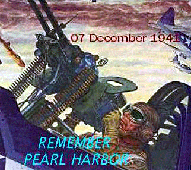
This presentation is viewed best with "INTERNET EXPLORER"
 |
 |
Destroyer Escort USS William C. Miller DE-259 |
|
William Cicero Miller-born on 18 July 1919 in Thomasville, N.C.-enlisted in the Navy as an apprentice seaman at Raleigh, N.C., on 20 October 1937. After instruction at the Naval Training Station, Norfolk, Va., Miller was advanced to the rate of seaman 2d class on 21 February 1938 and joined Scouting Squadron (VS) 6, attached to the aircraft carrier Enterprise (CV-6), on 30 September of that year. Miller remained with VS-6 into 1941 and became the rear-seat man for Lt. Clarence E. Dickinson, Jr. around April of that year. In the ensuing months the two became an efficient pilot/radioman team; and, on the morning of 7 December 1941, they both boarded their aircraft-a Douglas SBD-3 Dauntless-for what was to be a routine scouting flight. They were under orders to proceed to Ford Island and land there to refuel. Their ship, Enterprise, together with the rest of Task Force 8, would return later that day. Dickinson and Miller arrived over Oahu to discover the Japanese attack on Pearl Harbor underway. After one of the section had been shot down by a Japanese fighter, the commander of VS-6, Lt. Comdr. Halstead Hopping, broadcast the word that Pearl Harbor was being attacked. Miller and the other rear-seat men immediately unlimbered their .30-caliber machine guns. Attacking "Zero" fighters riddled Dickinson's plane, but Miller-already wounded once-downed one and ultimately exhausted his ammunition in the defense of the aircraft until she had been set afire. Dickinson called for Miller to bail out but received no answer. The pilot managed to get out of the falling plane; but Miller-either dead or so severely wounded that he was unable to free himself from the aircraft-remained with it until it crashed into a cane field. For his devotion to duty, despite his wounds, Miller was awarded a posthumous commendation by the Commander in Chief of the Pacific Fleet. |
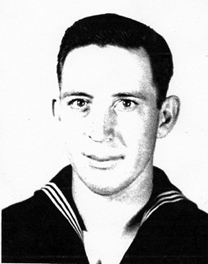 |
| Lt. Dickinsons report |
| Pearl Harbor Attack |
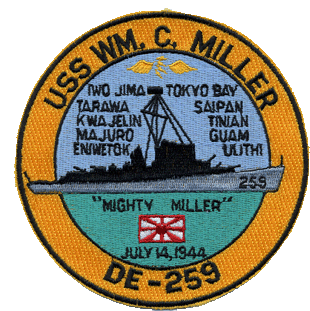
|
USS William C. Miller DE-259Flagship Destroyer Escort Division 16 PacificEvarts class Destroyer Escort (DE-259: displacement 1,140
tons; length. 289' 5"; beam. 35'1"; |
|
William C. Miller (DE-259) was laid down on 10 January 1943 at Boston, Mass., by the Boston Navy Yard, launched on 22 February 1943; sponsored by Mrs. Melvin B. Miller, the mother of the late Radioman 1st Class Miller, and commissioned on 2 July 1943 (located in the same slip with the USS Constitution "Old Ironsides" at the time of commissioning. ), Lt. Comdr.Frederick C. Storey, USNR, in command. |
| Invitation to Commissioning |
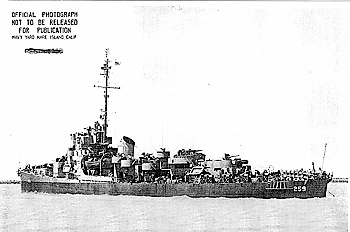 |
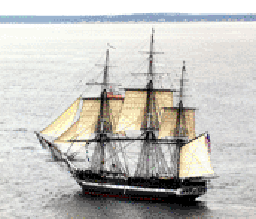 |
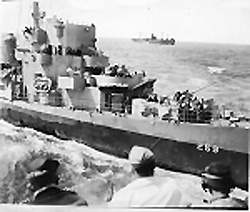 |
| Additional views of DE 259 |
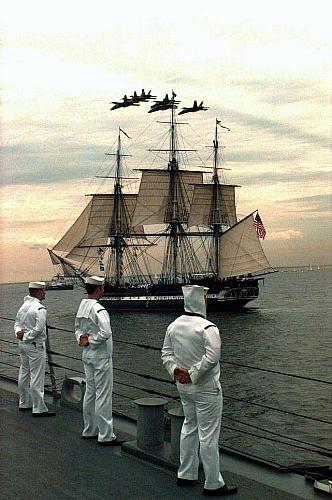
|
|
Sailors on board the destroyer USS Ramage (DDG 61) man the rails while escorting USS Constitution, the world's oldest commissioned warship afloat, underway in Massachusetts Bay as the Navy's Blue Angels Flight Demonstration Squadron fly over in salute. Commissioned on Oct. 21, 1797, Constitution set sail unassisted for the first time in 116 years. She is the oldest commissioned active warship in the world. |
|
Miller got underway on 19 July, bound for Bermuda. There, she conducted her shakedown before returning to Boston for post-shakedown availability and remained in the navy yard until 27 August, when she sailed for Panama. After transiting the Panama Canal between 1 and 3 September, the destroyer escort arrived at San Diego on the 12th and shifted to San Francisco on the 15th, before sailing for Hawaii nine days later in the screen for Convoy 4796. She returned to the west coast early in the fall but departed San Francisco on 19 October, bound for the Gilbert Islands and Operation "Galvanic." As a unit of Task Group (TG) 54.9, 5th Fleet, William C. Miller screened the ships of the Tarawa garrison group and patrolled in area "Longsuit" off the invasion beaches into early December. She then guarded the entrance to the lagoon at Tarawa through the middle of the month before departing the Gilberts on Christmas Eve, bound for the Hawaiian Islands. Reaching Pearl Harbor on 30 December 1943, William C. Miller underwent upkeep alongside the destroyer tender Black Hawk (AD-9) and remained in Hawaiian waters into February 1944. That year was to prove a busy one for the destroyer escort. She earned the other six of her seven battle stars in the next year and one-half operating on screening, escorting, and hunter-killer duties with convoys for the remainder of 1944. During that period, William C. Miller supported the occupation of Kwajalein and Majuro from 29 January to 8 February 1944; the capture of Eniwetok from 17 February to 2 March; the capture and occupation of Saipan from 26 June to 10 August; and the capture and occupation of Tinian from 24 July to 10 August. It was during the Saipan screening operations, however, that the ship avenged the loss of her namesake. At 2120 on the evening of 13 July, a patrol plane sighted a Japanese submarine submerging some 78 miles from Rorogattan Point, Saipan, and reported the enemy's position. Accordingly, William C. Miller and the other members of a hunter-killer group Gilmer (APD-11) carrying the officer in tactical command (OTC)-altered course and departed the screen for the transport area to track the submersible. At 0022 on the following day, the destroyer escort and her sisters arrived on the scene and commenced searching. Seven hours later, William C. Miller obtained sound contact at a range of 1,700 yards. The destroyer escort approached at 15 knots and dropped a 13-charge pattern at 0726. Opening the range after observing no damage, the escort vessel attacked for the second time, dropping a second pattern at 0752, once again, of 13 charges. That pattern appears to have proved devastating to Japanese submarine I-55. At 0804, William C. Miller noted pieces of wood popping to the surface about 500 yards ahead, one point on the starboard bow. One minute later, a "heavy and prolonged underwater explosion"-estimated to be about three times the shock of a depth charge explosion-shook the ship. Shortly thereafter observers in William C. Miller noted a large "boil' in the water some 50 yards in diameter. At 0806, the destroyer escort laid a third 13-charge pattern that apparently landed atop the submarine, completing whatever devastation had been wreaked by the second salvo. William C. Miller closed the oil slick and debris and lowered a boat to investigate. The ship soon recovered small pieces of cork insulating material; fractured wooden decking; and a fur-lined, Japanese seaman's cap. The depth charge barrage had literally torn the submarine apart. |
|
Lt. Ross Patterson. |
|
Note: |
| Click for information. Use Browser back button to return. |
| Tabular Record of Movement for I-55. |
| Discription of I-55, a Type C3 submarine. |
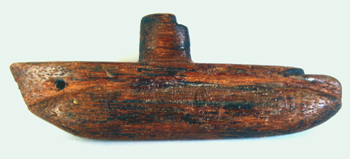
|
| Action Reports |

|
| I-58 | click for information on I-58 |

|
|
After dropping the Indianapolis off at Guam the destroyer escort paused briefly at
Eniwetok, in the Marshalls, on the 24th August before she pushed on for the Hawaiian
Islands, arriving at Pearl Harbor on 2 September. William C.
Miller returned to Eniwetok at the end of October and then shifted to
Ulithi, in the Carolines, where she picked up Ulithi-to-Eniwetok Convoy Number
19 on 5 November. After bringing that convoy safely into port five days later,
William C. Miller departed the Marshall Islands on 13
November with Eniwetok-to-Pearl Harbor Convoy Number 21. Making port at Pearl
Harbor on 24 November, the destroyer escort underwent ordnance repairs at the
Pearl Harbor Navy Yard into the following year. William C. Miller sortied
from Pearl Harbor on 6 February 1945, as part of Task Unit (TU) 51.6.2 to
participate in the assault and occupation of Iwo Jima between 23 February and 16
March. She returned to Pearl Harbor in early April, via Guam and Eniwetok. The
destroyer escort subsequently steamed back to the west coast and remained there,
first at San Francisco and then at San Diego, until 13 June when she sailed for
the Hawaiian Islands in company with Cabana (DE-260). After arriving at Pearl
Harbor on 19 June, William C. Miller escorted a convoy to
Eniwetok which she reached on 6 July. She soon put to sea to operate in the
screen of 3d Fleet units in their operations against the Japanese home islands.
She performed those duties into mid-August when hostilities with Japan ceased.
William C. Miller arrived at Ulithi on 19 August but soon sailed for Tokyo Bay as part of the initial
occupation forces. She arrived at Tokyo Bay on 26 August and was there at the
time of the formal Japanese surrender on 2 September. Later that month, the
destroyer escort headed home -via Ulithi, Eniwetok, and Pearl Harbor-and reached
San Francisco on 17 October. William C. Miller was
decommissioned at the Mare Island Naval Shipyard on 21 December and stripped of
all usable equipment. On 8 January 1946, William C. Miller
was struck from the Navy list. Sold to Mr. Fred Perry of New York City on 10
April 1947, her hulk was subsequently scrapped on 19 November 1947.
received seven battle stars for her World War II service. |
|
PLANK OWNERS: Following tradition dating back to wooden ships, men who put a ship in commission own a plank of the main deck. Fortunately, this tradition survives to this day, despite the fact that the main deck is now steel. |
|
PLANK OWNERS |
|
Commissioning Day |
|
SCRAPBOOK |
|
SHIP'S CREW |
| Links to other Destroyer Escort sites |
|
and news |
|
and Awards |
|
|